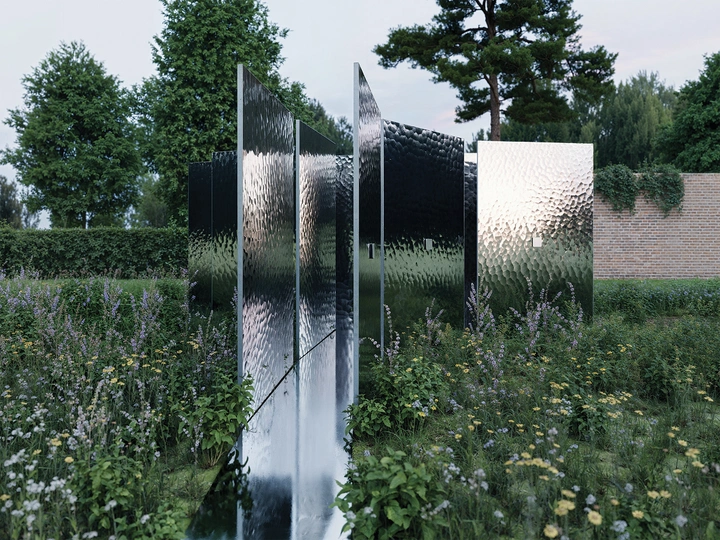Sound Greenfall: A serenade to plants and humans

Sofia Boarino is an architect, researcher & sound artist who explores the relationship between sound, space and perception. She obtained her Master’s degree in Architecture at the AAM-USI Accademia di Architettura di Mendrisio in 2020 with the project Hit the Beat, which experimented the relationship between architecture and music. Her work won the Swiss Engineering Ticino Prize in 2021 and was exhibited at the Chiasso Cultural Center in the same year and recently published on Archi magazine. During her studies she also attended the PUCP University in Lima as an exchange student and specialised in acoustics with Professor Carlos Jimenez. Boarino has collaborated internationally with various architecture and art studios, including TEN Studio in Zurich. In 2018 she patented her project Sounds of Etna, and in 2019 she became a fellow of the Madworkshop Foundation (L.A.), with which she realised the project Témenos. She is an active lecturer – among others she lectured at the ETH Zurich for Acoustic Niche Workshop, at Ca’ Foscari University for Moving Boundaries course on neuroarchitecture, and led a workshop with Valentina Rizzi at Arcos - Ocra Montalcino on spatial intimacy. She is also a contributor to ANFA–The Academy of Neuroscience for Architecture, and in October 2025 she will begin her doctoral research at UCL-University College London, where she will investigate sound and light in neuroaesthetic spatial design. Her artistic and sound practice, under the name LOTO, is gaining international visibility: among others, she performed at Zurich Design Weeks in 2022 and at Fuorisalone di Milano in 2022 and 2025, and is currently developing new visual and sonic artworks. Now her project Sound Greenfall, a work of bioacoustic architecture, is exhibited at the 19th International Architecture Exhibition of La Biennale di Venezia curated by Carlo Ratti, and she is currently attending the research residency Bauhaus Lab 2025 at Bauhaus Dessau Foundation.
Sound Greenfall is a transdisciplinary installation merging architecture, bioacoustics, neuroscience, and ecology to propose a new bioacoustic spatial paradigm. Currently presented at the 19th International Architecture Exhibition of La Biennale di Venezia, it emits cascades of calibrated low-frequency sounds able to promote plant growth and human neurophysiological well-being. Nested in a blooming garden, visitors walk and sit within its reflective structure, immersed in a cascade of sound waves and enveloped by the rich multisensory environment of the garden to foster restoration and connection.
The project draws on pioneering research conducted with scientists from CNR and the University of Florence (plant bioacoustics) and from Cambridge and Harvard (neuroscience). Plants of Mentha Pulegium exposed to specific low-frequency sounds showed improved growth and adaptability; in parallel, EEG clinical analyses on humans showed enhanced relaxation and cognitive restoration, and overall well-being. These findings open the path for new forms of regenerative and scientific-driven architecture rooted in a new “vibrational ecology” across species.
The project responds to the ecological crisis, seeking to bridge the theoretical and emotional gap between humans and nature. Rooted in the critical lineage that challenges oculocentric design, Sound Greenfall recasts architecture as a resonant interface: a threshold where bodies, plants, and atmospheres co-vibrate, through sound as spatial agency and listening as a design act to reawaken the empathic senses. Modular and adaptable, it can be expanded across geographies and formats, from public installations to clinics and biodiversity reserves. Envisioning a movement that extends the research to vital plant species and cross-cultural landscapes, the project aligns with regenerative goals, positioning art and architecture as mediums for ecological intelligence, interconnection and well-being.